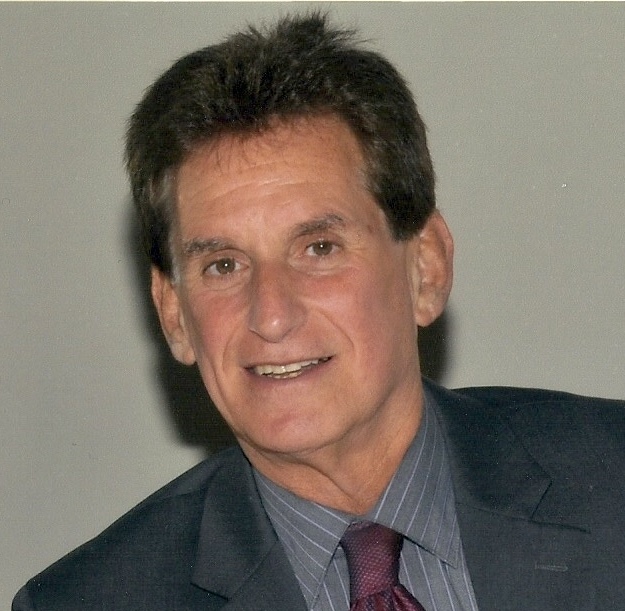[polldaddy poll=6922810]
by Elena Schwartz
There has been an ongoing debate in the world of education on how to create consistency in the curriculum and equity in grading while allowing for teacher freedom.
President Barack Obama has tackled the issue by creating the Race to the Top Fund, a competitive grant program that awards states funding based on certain criteria.
To be eligible, states must be “developing and adopting common standards from the Common Core Standards Initiative, supporting the transition to enhanced standards and high-quality assessments and developing and implementing common, high-quality assessments,” according to the Race to the Top Program published by the Department of Education.
The Common Core Standards Initiative seeks to make curriculum across the country uniform. The Core Standards apply to math and English, and give a clear idea of the topics students are supposed to have mastered at every age. Forty five states, including Massachusetts, have fully adopted this initiative.
Massachusetts was awarded $250 million by the Race to the Top program for implementing these standards.
At this school, different departments balance this movement for standardization, as well as the need for consistent curriculum and equitable grading, with teacher freedom differently.
Science
In the science department, each course is built around “cornerstone experiences,” or foundational topics, according to science department head Amy Winston. The teachers of a particular course decide collectively what the cornerstones are.
However, science teachers must teach within the Massachusetts framework, which dictates, to a certain degree, what topics teachers need to cover. The combination of the common “cornerstone experiences” and the Massachusetts framework ensure that, for the most part, science teachers are covering the same material in every class, according to Winston.
To further promote consistency, teachers who teach classes of the same course meet once a week in “teacher teams” to discuss what topics they will cover in the coming week and how they will teach these topics, said Winston.
“Building a community of trust among teams of teachers—that’s where you get the best results,” said Winston. “The physics teachers have been meeting since 1999. That’s why that course is so consistent.”
Students within different classes of the same course take a common midterm that serves as a formative assessment tool, or an assessment used to check up on student learning and identify topics that need to be retaught, according to Winston. A secondary result of this common midterm is equitable grading throughout these different classes.
Students in multi-section courses also take a common final. To ensure equitable grading on both the midterm and the final, teachers agree beforehand on the points they will award for different answers on the open response.
As a rule, no final exam can count for more than 20 percent of a student’s final grade.
Although the science department recognizes the need for consistent grading and curriculum, there is no agreed-upon grade distribution, or curve, for each course, according to Winston.
“But I look at the grade distribution every term,” said Winston. “You can spot glaring difference very quickly, and then, if necessary, I can have a conversation with a teacher.”
“I also give the teacher teams this data. There are usually reasonable explanations for significant discrepancies in grade distribution and looking at data together gives teachers the opportunity to work and grow together,” said Winston.
“We do that with MCAS too. If one class did particularly badly, then teachers can seek help from each other: ‘My students did poorly on waves. How did you teach that?’ Providing teachers with opportunities to collaborate results in better learning for all kids.”
However, every class is not the same, and so should not be taught exactly the same way, according to Winston. “Some of our best innovations come from teachers trying new things,” said Winston. “Variety will lead to better things for students. It just takes awhile to get there.”
World Language
In the world language department, there are many courses that are comprised of only one section, especially in the smaller enrolled languages. In addition, several of the two-section courses are taught by the same teacher. In such courses, consistent curriculum and equitable grading across classes is not an issue.
Within multi-section courses, teachers of different classes agree on a written curriculum to create consistency. They teach the same content, such as vocabulary themes, grammar concepts, and outside reading, according to department head Nancy Marrinucci.
To safeguard grading equity within multi-section courses, all students of a course take the same final exam. In at least one course, students also take a common midterm.
However, teachers of the same course do not abide by a common curve or grade distribution.
Although the department also has not graded work together to establish common expectations for grading speaking and writing assessments, Marrinucci said she wants to move more in that direction.
“We need to find the time to look at student work generally, starting with the common final, and reach some agreement as to common expectations for grading,” said Marrinucci. “Likewise, it’s important for student results on assessments to inform our practice.”
But the nature of language introduces unique challenges to consistent grading, according to Marrinucci.
“It’s difficult to have perfectly equitable grading in language because the grades themselves are so subjective. We want students to create with language, and the more open ended we make assignments to allow for more creativity, the more subjective grading can be,” said Marrinucci. “That’s why common rubrics are important.
“I believe in transparency with grading. ‘How are you calculating, how are you weighting different assignments?’ Students should know; expectations should be clear.”
Marrinucci said that with language, there is room for inconsistency with formative assignments, such as homework and minor quizzes, but that summative assignments, such as major projects and tests, should assess similar content and skills throughout classes of multi-section courses.
“I might decide as a teacher, ‘This class doesn’t do their homework. I’m going to start giving them a quiz at the beginning of every class to motivate them to do their work.’”
The world language department practices “a lot of collaboration in terms of the bigger and weightier assignments and assessments,” said Marrinucci. “There’s more variety with the in-between assignments, and that’s okay.
“To completely safeguard equity, everything would have to be exactly the same. Every assignment, every test. I’m not sure that’s beneficial to our students; all classes are different, and individual teachers understand their students’ strengths and learning needs best.”
History
In the history department, to ensure uniform curriculum, there are departmental lists of what topics must be covered in every course and every class in a multi-section course uses the same textbook, according to department head Jonathan Bassett.
“In terms of content, courses are very similar,” said Bassett. “The topics are the same, although the emphasis teachers put on each topic might be different.”
To encourage consistent curriculum and grading, every teacher is a member of a “teacher team” with other teachers of the same course, according to Bassett. These teams meet once a week to discuss what material is to be taught in class.
However, many history teachers teach multiple courses, and so they cannot be on a team for every class they teach. Teachers are generally members of only one team, so no team includes every teacher of that course.
To foster equitable grading, teachers also share student work in team meetings, according to Bassett. “That way, the basic expectations around content and skills are consistent.”
There is also a department rubric for grading analytical essays which teachers are required to follow.
Unlike other departments, the history department does not give midterms, and does not have a uniform final exam for every class of a course. Instead, individual teachers create finals for their classes according to department guidelines, said to Mr. Bassett.
To ensure some degree of consistency, all finals are submitted to Bassett in advance, who reads through them to make sure they are relatively similar. There is also a question bank where teachers can take multiple choice questions, if they choose to, making that part of the final fairly consistent, according to Bassett.
“If a teacher’s final completely skips a certain topic, that teacher is going to have a conversation with me,” said Bassett. “And I try to make sure the tests are around the same length.”
An advantage to finals particular to classes is that they guarantee that students are not tested on material they have not been taught.
History teachers have not agreed on a common grade distribution but “most formulas are pretty close,” attested Bassett.
“It’s not lockstep, and it shouldn’t be,” he said. “Teachers need some freedom to innovate. The measure of effective teaching is not whether it’s identical in every class, but whether kids are learning.”
Math
In the math department, there is a set curriculum for every course. This curriculum is adjusted every year by teachers within the department, according to math teacher Karly Burke.
“I teach 502, so the 501 teachers tell me and other 502 teachers what units we need to go over, and what units students mastered,” said Burke. “That way, if necessary, we can adjust the curriculum for the coming year.”
Throughout the year, teachers meet in teacher teams broken up by course every week.
“We plan and discuss topics to be taught and share test questions. Or, we look at student work. Teachers consult each other about how to grade specific problems on tests and quizzes,” said Burke.
All classes within multi-section courses are given a common final and midterm made collaboratively by all the teachers of the course.
“We make answer keys that are very specific to how many points students are awarded for certain answers and how many points they lose for certain mistakes. That way, if I graded a different class’s finals, the grades would look the same as if a different teacher graded them.”
There is no set grade distribution term to term, but on the midterm and final exam, the math department practices curving or “leveling.”
“Online we have a tally chart of whose students got which grades,” said Burke. “If we see that almost no one got an A, we lower the A requirements. If we see that no student got a certain question right, we consider adding some points to scores or lowering the requirement for each grade by two points.”
Grading policies are fairly similar, according to Burke. “We do tend to weigh tests and quizzes similarly, but each teacher has their own weight for homework, classwork, tests, etc.
“If a student were to take a test from another teacher of their course, our hope is that they would know the material and get a similar grade, no matter who the teacher.”
English
To standardize curricula in the English department, the curriculum at every grade level includes “core works,” or literature that every class reads, according to English teacher Nick Grant.
Two core texts are required for every grade. Other than those two texts, teachers can pick and choose from the grade-specific reading list what other literature they teach.
Certain books are reserved for every grade to prevent students from having to read the same book two years in a row.
For ninth and tenth grade classes, there is also a departmental list of the grammar topics that need to be covered.
“But if a few teachers choose to more or less ignores these lists to some extent, they won’t get their hands slapped. The requirements are not ironclad,” said Grant.
To standardize classes further, teachers also meet once a week in Professional Learning Communities (PLCs) to “look at student papers and discuss how we respond to them in order to create more consistency,” according to Grant. “If we’re all teaching the same book or content, we also share curriculum. Two heads, or three or four, are better than one.”
“Every once in awhile, we also look at papers as a whole department. We correct and grade them individually, and then talk about the comments we made and the grades we gave. Most of the time, the grades are very similar.”
Unlike the math, science, and language departments where standardized finals are the norm, English teachers create the finals for their individual classes.
“Finals at the same grade level sometimes look nothing alike,” said Grant. “A final exam in one class might consist of one long take-home essay, while a final exam in another class might include 100 SAT-type multiple choice questions focusing on vocabulary, grammar and reading comprehension.”
All finals are submitted to department head Melissa Dilworth for review before exam week.
“There is an expectation, but not an absolute requirement, that there be a grammar section on ninth and tenth grade finals. Does that happen across the board? No,” said Grant.
The English department does not practice a common grade distribution or curve.
“In one of my classes last term, there were three A’s and five grades of A- in a group of twenty students. Some teachers might say it was overly generous of me to award A’s to nearly half of my students, but it is a clever, hard-working group, and I grade as I see fit,” said Grant.
“I think that a discrepancy in grading probably does exist in the English department, and my guess is that the dichotomy mostly has to do with A’s and B’s. Some teachers reserve the A for the very best students that they have ever ever taught; it’s meant to be an almost unreachable ‘gold standard.’ But some teachers give A’s more liberally. That’s where there is a discrepancy,” said Grant, “but I’m only speculating based on the conversations I’ve had with other English teachers.”
“However, if a teacher were giving out a lot of D’s and F’s, that would probably result in a conversation with the department head,” said Grant. “But there is nothing officially ‘on the books’ in this regard either. It’s all done on a case by case basis.”
“We as teachers are serving two masters: fairness to our students, and the freedom to teach what you know and love.”








































